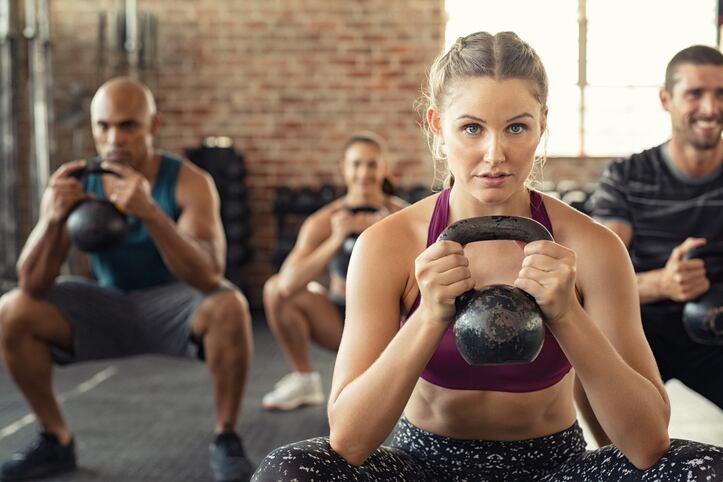In an unprecedented move, the United States Anti-Doping Agency started a drug-testing program in which top Olympians conduct urine and blood tests in their homes on their own while being observed remotely by phone and video conferencing.
“USADA has always been at the forefront of anti-doping and it is no surprise they are taking a unique approach to it during the pandemic,” said Oliver Catlin, president, Anti-Doping Sciences Institute & Banned Substances Control Group.
Coronavirus set the move in motion
After drug testing in sports came to a screeching halt, the agency decided to see if sample collection could be done virtually. According to USADA CEO Travis Tygart, the agency had been toying with the idea of virtual testing for months, but coronavirus put a jumpstart in the process.
In early April, USADA invited 15 elite athletes to volunteer in the pilot program to virtually test themselves. The program, called Project Believe 2020, is slated to last eight weeks.
A few of the volunteers include Olympic gold medalist swimmers Katie Ledecky and Lilly King, sprinters Allyson Felix and Noah Lyles, steeplechaser Emma Coburn, long distance runner Aliphine Tuliamuk and hurdler Sydney McLaughlin.
Industry reactions
“NSF International is happy to see USADA taking steps to maintain athlete safety in this new environment. It’s pleasing to learn that athletes are stepping up for this voluntary program, which shows their character and commitment to clean and safer sport,” remarked Brian Jordan, RSCC*D, CSCS*D, Technical Manager, NSF Certified for Sport.
Shawn Arent PhD, professor and chair in the Department of Exercise Science at the University of South Carolina and the director of UofSC Sport Science Lab, told NutraIngredients-USA that “In the current climate, it may very well be the best option to make an effort to promote drug-free sport and maintain a degree of accountability.”
Dr. Susan Kleiner, a PhD nutritionist who advises high-profile female athletes, said she isn’t a doping expert, “but it doesn’t take being an expert to know the cheating has been going on even with in-person testing. Right now this appears to be the only option, and seems well thought out."
The process
Test kits are sent out to the athletes, who hold on to those kits until they receive an unannounced call from a USADA doping control officer. From there, the athletes must produce samples of their blood and urine. The athletes then seal the samples and send them overnight to a World Anti-Doping Agency accredited laboratory for analysis.
All the paperwork and sworn testimony are done on video.
The testing itself is also monitored on camera by USADA personnel using Zoom or FaceTime, with the exception of urine collection. Instead, the athlete must give a tour of the inside of the bathroom through their phone or laptop, then set the device right outside the door during the collection process.
Once the urine is collected, the athlete dips a temperature strip into the sample on camera to show that it’s fresh.
Meanwhile, the doping control officer is watching the clock for any irregularities.
USADA also has the capability to compare the athlete’s urinalysis with previous tests to flag any inconsistencies or irregularities.
Manipulation concerns
Eight-time world running champion Joseph Gray told NutraIngredients-USA that he is a strong believer in testing athletes — in person. “Virtual tests are great due to the times of course, but it isn’t something I believe would keep sports clean in the future.”
“There are likely some loopholes that some athletes will look to exploit, but these may get ironed out as the program progresses,” said Arent.
While the process isn’t bulletproof, officials said that the visual observation of the room right before the test, combined with the timing of the process and the temperature check of the sample “are strong safeguards against manipulation.”
Still, Catlin pointed out that the athletes included in the virtual program volunteered for it and aren’t exactly a group they would be concerned about doping. “The athletes mentioned are known as model athletes from an anti-doping perspective. I wonder how the virtual approach might work for an athlete actively trying to dope or beat the system.”
Catlin added that virtual testing is a great concept in theory, but in order for it to be effective, the program has to be able to actually catch dopers. “Given the extreme lengths and means dopers go to in order to thwart the testers in regular circumstances the opportunities to do so in a virtual environment would seem to be greater as a result of the inherent challenges.”
Privacy concerns
Using Zoom to monitor sessions is curious, given US prosecutors are investigating the platform’s security practices, while the FBI has issued a warning about hijacked sessions.
“The Zoom platform was recently challenged with questions over security and privacy. Given the personal nature of the collections process I worry about the possibility of hacking. WADA’s system has been hacked in the past with athlete’s personal information leaked publicly. I have no doubt those considerations were important in the design of the program and that they have done everything they can to protect against the possibility of hacking but it seems hard to completely eliminate the risk," Catlin pointed out.
Zoom recently announced a number of steps being taken to combat problems such as data hacking, hijacking sessions and routing information through China, with the company now offering paid account users the option to select the region their data is routed through.
Will the rest of the world follow suit?
Other concerns raised is the lack of testing being conducted on athletes in other parts of the world.
Prior to the postponement of the Tokyo Games, many anti-doping officials expressed concern that a break in testing would lead to cheating ahead of the Olympics.
In February, China’s Anti-Doping Authority (CHINADA) decided to temporarily freeze testing in the interest of public health.
In March, Canada also announced they would hold off on testing athletes.
Currently, the World Anti-Doping Agency regulations don’t permit virtual testing and some of the methods USADA has incorporated. Anti-doping agencies in Germany and Norway are considering similar virtual testing initiatives, Tygart said.
A new norm?
The pilot test could have future implications on how athletes are tested. Once the coronavirus pandemic passes, might agencies adopt the virtual tests?
“I think the biggest drawback was made by the athlete from Kenya who recognized that this won’t be as easy worldwide as it is in developed nations,” said Kleiner, who is referring to Aliphine Tuliamuk, who pointed out that internet service isn’t always readily available in places such as her home country of Kenya.
“I could see this being a model for a long-term solution rather than just triage right now. It certainly has the potential to save money and maybe even some degree of “hassle” on the athlete’s end,” said Arent.
Indeed, Catlin noted that the current virtual approach seems to be more symbolic, as opposed to a permanent solution. “The athletes are leading by example which is wonderful and they are volunteering to do so. It would be nice to save the 50% or more of overall anti-doping cost that is associated with an out of competition collection, however, I think the effectiveness would be in doubt when it comes to routing out the real dopers. So virtual collections has some challenges to overcome if it is to be a permanent solution.”
Whether they are testing online, in person or even at all, Jordan suggests athletes remain vigilant. “Despite any changes in drug testing procedures, athletes should continue to mitigate the risks of consuming a contaminated dietary supplement by following the USADA recommendations for dietary supplement use.”




